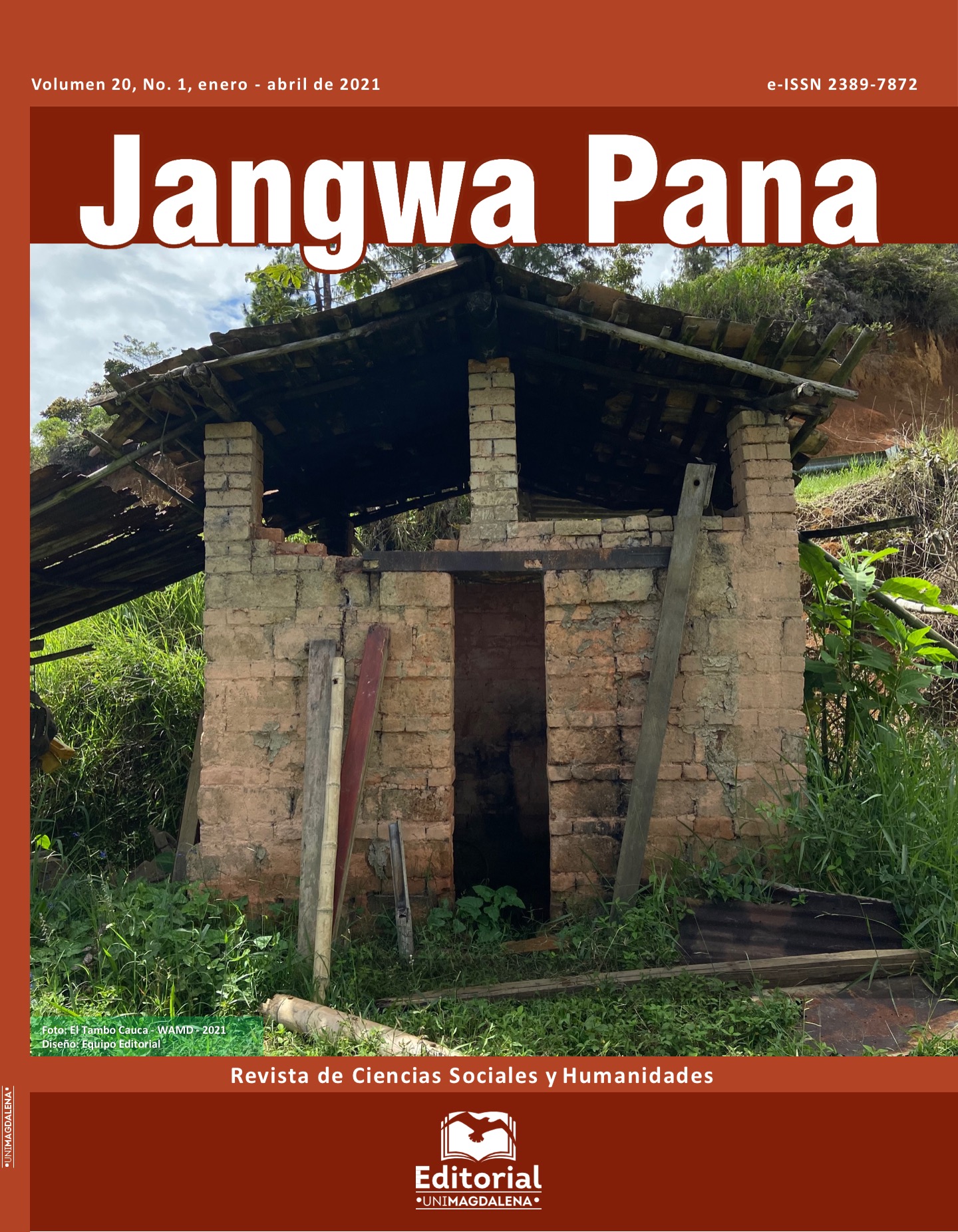After the route of Nasa Coffee. Organizational techniques in Tierradentro, Colombia
Main Article Content
Abstract
Downloads
Article Details
References
ACIN. 2017. Café Tierradentro. Consultado el 7 de febrero de 2017. Obtenido de: http://www.cafedeinza.com/index.php/cafe-tierradentro
Almeida, A. (2012).. “Territórios e Territorialidades específicas na Amazônia: entre a “Proteção” e o “Protecionismo”.” In: Dossiê. Caderno CRH, Salvador, v. 25, n. 64, p. 63-71, Jan./Abr.
CONPES (1996). 2835 – El PLANTE. Ministerio de Agricultura y Desarrollo Rural, Ministerio del Medio Ambiente, DNP: UDA-UPA-UJS. Santa Fé de Bogotá, febrero 7 de 1996.
Balfet, H. (1991) Des chaines opératoires, pour quoi faire? In: Balfet, H (ed), Observer l'action technique. Des chaînes opératoires, pour quoi faire? Paris: Éditorial du CNRS. Pp. 11-19
Barth, F. 1976 [1969]. “Introducción”. En: F. Barth (ed.), Los grupos étnicos y sus fronteras. México, Fondo de la Cultura Económica, pp. 9-49.
Bernal, S. 1953. “Mitología y cuentos de la parcialidad de Calderas, Tierradentro. En: Revista Colombiana de Antropología. Volumen 1. Nº 1. Editorial Antares: Bogotá. Pp. 279-309.
________. 1954a. “Economía de los Páez”. En: Revista Colombiana de Antropología. Volumen 3. Bogotá, Colombia. Pp. 291-368.
________. 1954b. “Medicina y magia entre los Paeces”. En: Revista Colombiana de Antropología. Volumen 2. 219-264.
Bourdieu, P. 2007 [1980]. El sentido Práctico. Siglo XXI editores: Buenos Aires.
Coupaye, L (2015) Chaîne opératoire, transects et théories: quelques réflexions et suggestions sur le parcours d’une méthode classique. 69-84
FNCC. 2018. Informe del Gerente. 86 Congreso Nacional de Cafeteros. Diciembre 5 de 2018. Bogotá.
ICO, 2018. Informa sobre avances de logros. Consejo Internacional del café. 125 periodo de sesiones 23 septiembre 2018. Londres, Reino Unido.
Ingold, T. (2000). The perception of the environment. Essays on livelihood, dwelling and skill. London and New York: Routledge.
Lemonnier, P. (1976). “La description des chaines operatories; contribution a l’analyse des systemes techniques”. Techniques et Cultures Nº 1. Pp. 101-150.
Ortiz, S. 1999. Harvesting coffee, bargainind wages. Rural labor markets in Colombia 1975-1990. United States of America: The University of Michigan Press.
Palacios, M. (2009). El café en Colombia, 1850-1970: una historia económica, social y política. El Colegio de México, Centro de Estudios Históricos: México,D.F. 575 p.
Pendergrast, M. (1999). Uncommon Grounds. The History of Coffee and How it Transformed our World. Basic Books: New York.
Mauss, M. 2003. “As técnicas do corpo”. Em: Sociologia e Antropologia. São Paulo: CosacNaufy.
Mura, F. (2000). Habitações Kaiowá. Formas, propriedades técnicas e organização social. Dissertação de mestrado em Antropologia Social do Museu Nacional. Universidade Federal do Rio de Janeiro.
Rappaport, J. (1982). Territory and Tradition: The ethnohistory of the paez of Tierradentro, Colombia. Thesis. University of Illinois.
Schlanger, N. (2005). “The chaîne opêratorie”. En: Renfrew C & Bahn (eds) Archaeology – Key Conpects, Routledge, London.
Strathern, M. 2014. O efeito etnográfico e outros ensaios. São Paulo: Cosac Naify.

